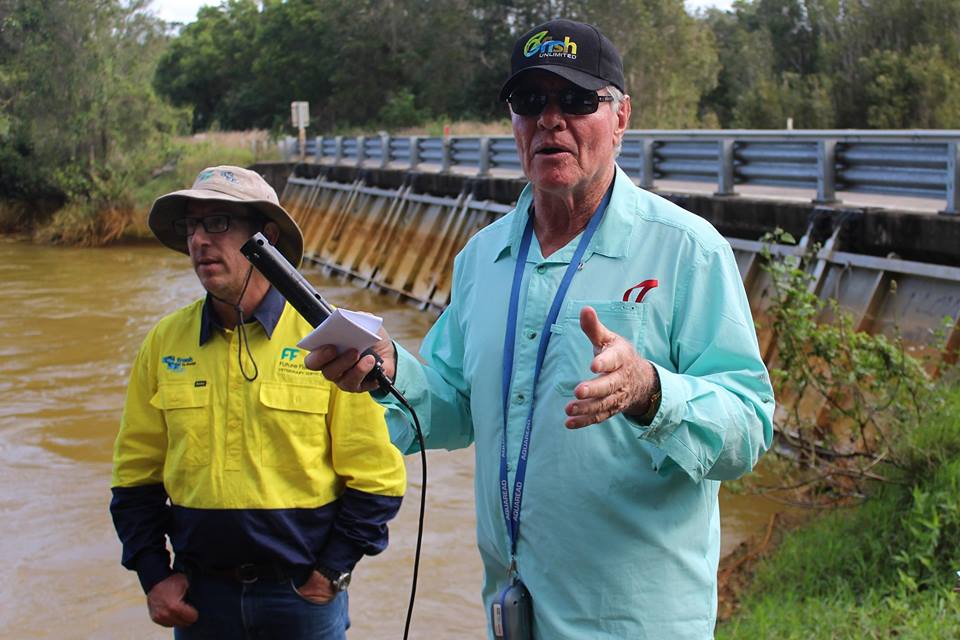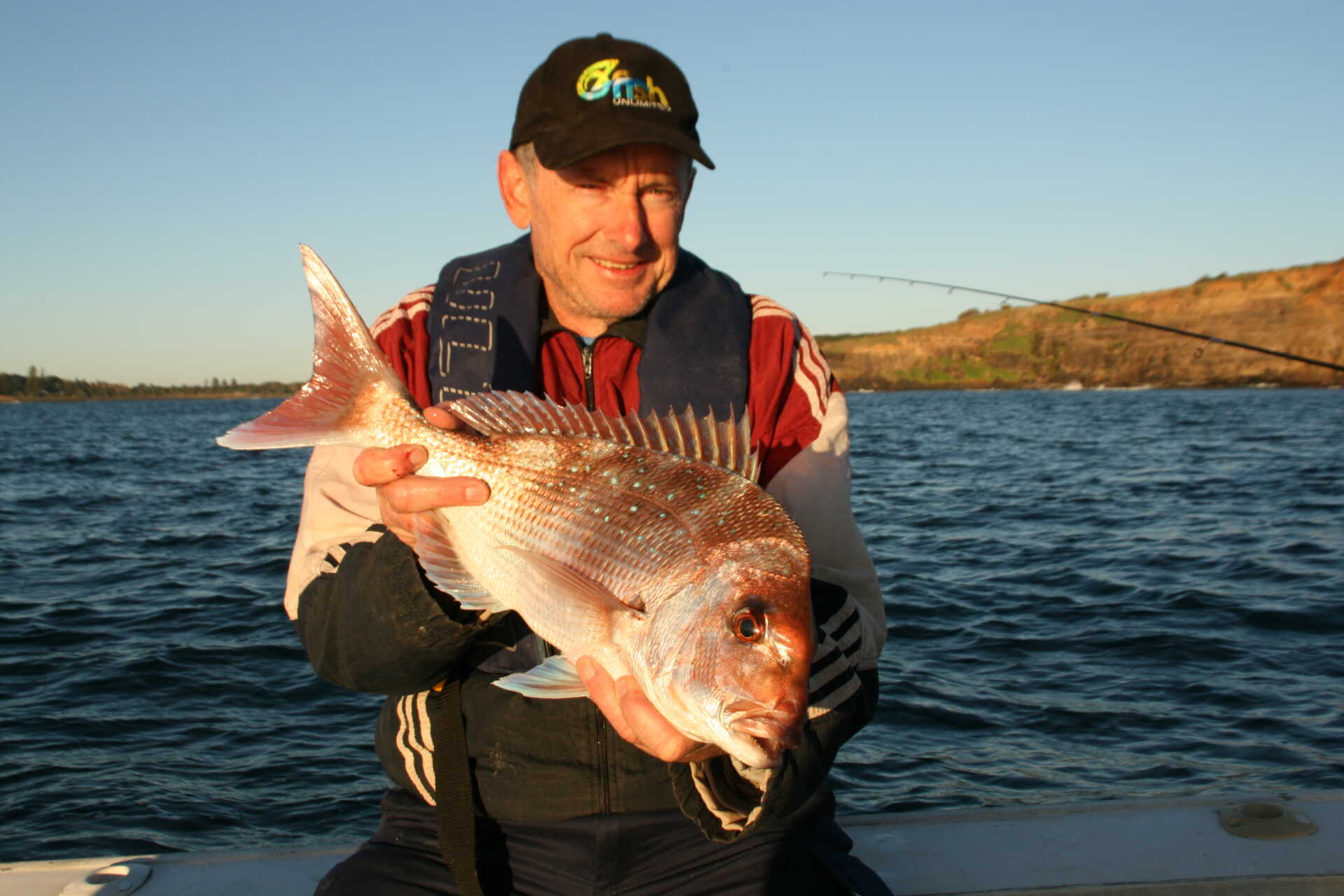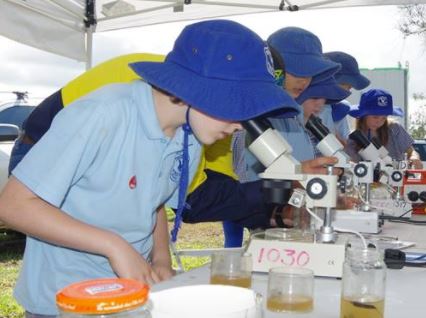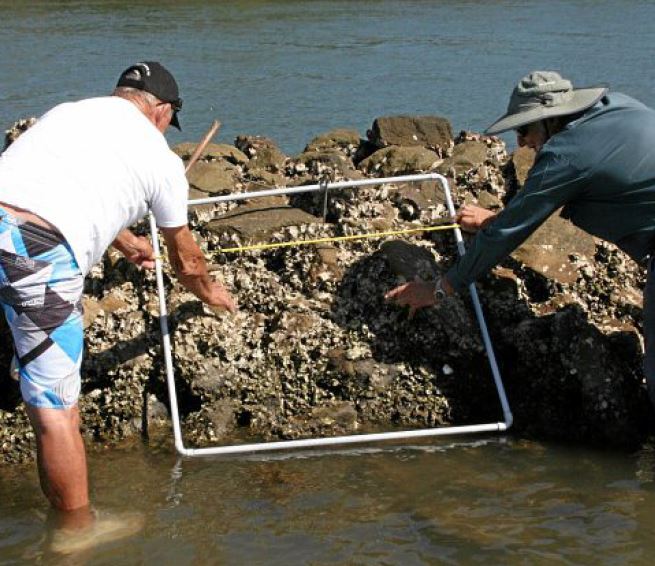Champions of Fish Habitat OzFish Richmond River Chapter

The first of its kind, the OzFish Richmond River Chapter was formed by a bunch of fishers keen to reverse the demise of their local fishery.
Once a month, fishing clubs across Australia get together to discuss ‘all things fishy’. From planning for the next social event at the RSL to deciding how many lamingtons are needed to raise funds for the next fishing trip. But with a recent decline in fish stocks, the conversation in clubs is changing. Recreational fishers are questioning why they are catching less fish and the latest research often points to loss of habitat. Switched on fishers are doing something about it. In growing numbers, fishers are rolling up their sleeves and restoring habitat in their local waterways. A new type of fishing club is emerging.
The first of its kind, the OzFish Richmond River Chapter was formed by a bunch of fishers keen to reverse the demise of their local fishery. The group consists of both commercial and recreational fishers. John Larsson the Director of OzFish Richmond River Chapter explains how the chapter was formed;
“Locally there had been a long history of recreational fishers blaming the commercial guys for a reduction in their catch rates. But science was telling us that habitat loss was the main cause of the decline. I was keen to get the message out. A handful of members from my old fishing club joined me in starting an OzFish Chapter. OzFish appealed to us because they were keen to help us restore our local fish habitat.”
Long-time resident of Ballina on the NSW north coast, John had watched the rapid decline in his catch rates, coinciding with habitat loss. Up to 70% of fish habitat has been lost in the Richmond catchment. Excessive clearing of vegetation is causing severe siltation within the river, smothering shellfish reefs and causing turbidity.
Today, oyster farming in the Richmond has ceased, wild sub-tidal oysters and seagrass are in perilous decline. Bird life is similarly, vastly diminished, mirroring the lack of aquatic food resources now available. Locals fear that poor recreational catch rates are having a negative impact on the tourist industry. Indeed, many are concerned that the decline of the health of the river is having a severe and sustained impact on business economies throughout the Richmond Valley, especially within the Ballina Shire.
“Someone had to step up and do something. It was great to have Craig Copeland, the founder of OzFish attend our first 2 or 3 meetings. He explained if you take away the nursery habitat like mangroves, saltmarsh and seagrass you take away 90% of the capacity to produce more fish.”
The Chapter then set 2 main objectives;
- Reverse the decline of fin fish stocks and marine biota on the Richmond.
- Improve water quality to allow re-establishment of a commercial oyster industry.
The groups first project was to restore some of the riparian zone along the river bank.
“We concentrated on areas that had gaps in the vegetation along the river bank, planting local native species. To date we have planted more than 1300 seedlings.”
John also recognized the need to include the community in rehabilitating the river. On National Gone Fishing Day 2016, the chapter held a ‘fun family fishing day’ with activities highlighting the importance of fish habitat.
“Those that attended had the opportunity to learn all about fishing and participate in river bank restoration by planting a tree. Some 300 trees were planted and many more seeds sown in the young minds of our next generation. The day was a huge success!”
The Gone Fishing Day highlighted to chapter members the important role our kids play as custodians and stewards of the natural landscape. They recognized the need to educate the next generation about conservation of our wetlands. A program curriculum was drawn up and presented to local primary schools. The idea was well received and the Wetland Restoration Education Program was born.
“The pilot program has been a resounding success so far with several local primary and high schools taking part in the Richmond Valley area. The students have shown great enthusiasm for many parts of the program especially the bird watching and working with the microscopes. Getting out in the field and interacting with the environment is the key to engaging the students. Positive feedback came from the teachers too, who pointed out how easily the program aligned with the syllabus set by the DECC.”
Once water quality starts to improve, the chapter would like to see oysters farmed in the river again.
“We have been working with the DPI in trialing a disease resistant strain of Sydney rock oyster for the Richmond. The trial is still underway; however, some interesting findings are surfacing. Although high mortality rates of Sydney Rock Oysters have so far been observed, we found another species of oyster surviving in among the dead. These were later identified as Black Lip Oysters. Importantly, these oysters were recruiting naturally in the river! Black Lip Oysters are successfully farmed in Northern Australian waters, so their survival in the Richmond looks promising.”
OzFish Chapters like Johns’ continue to form right across the country. Members meet regularly to talk about fish and fishing, discuss habitat issues and take part in habitat projects. Click HERE to find out if there is a chapter near you. If not head to our CONTACT PAGE and we can talk about starting one in your local area.
Contact us;
OzFish Richmond River Chapter invites you to partner with us in protection and restoration of our local river system.
Email: ozfish.rich.chap@gmail.com
Facebook – Richmond River Chapter
Resource links;
Northern Star ‘Super Oysters Article’, Lismore NSW 22 May, 2017
Wetland Restoration Education Program – the full story
Wetland Restoration Education Program – video
Funded by the Fisheries Research and Development Corporation









